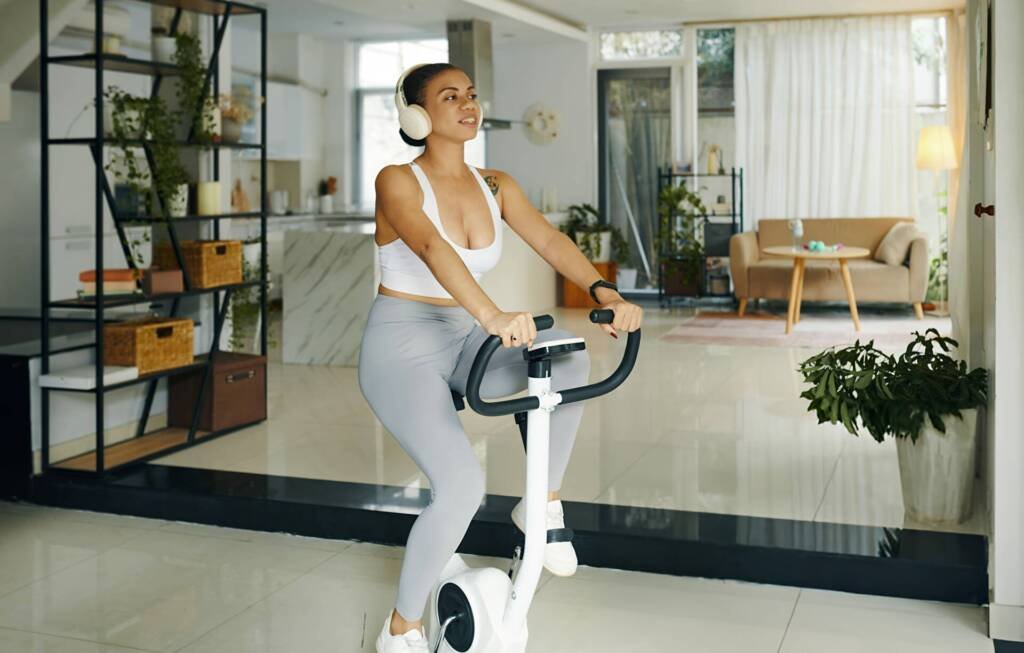Are you on a mission to shed those extra pounds or just looking to level up your fitness game? Either way, understanding which exercises burn the most calories can be a game-changer. With countless opinions and scientific studies floating around, it can be challenging to pinpoint the best workouts for maximizing calorie burn. Some might swear by high-intensity interval training (HIIT) as the ultimate calorie-torching routine, while others advocate for steady-state cardio like running or cycling.
Table of Contents
But fear not! We’re here to provide a comprehensive guide detailing the benefits and drawbacks of various exercises. We’ll also explore how intensity, duration, and individual fitness levels can influence calorie burn, helping you make an informed decision tailored to your specific needs and goals. Whether you’re an avid gymgoer or prefer at-home workouts, this guide will empower you to optimize your exercise routine and achieve the results you desire.
Understanding Calorie Burn

The Concept of Calorie Burn
Calorie burn refers to the number of calories your body uses for energy during physical activities. This is crucial for weight loss because burning more calories than you consume leads to a caloric deficit, which is essential for losing weight. Even at rest, your body burns calories to maintain essential functions like breathing and circulation, a concept known as your Basal Metabolic Rate (BMR).
Factors Influencing Calorie Burn
Several factors contribute to how many calories you burn during exercise. Your metabolism plays a significant role, as a faster metabolism means you burn calories more quickly. Body composition is another key player; muscle tissue burns more calories at rest than fat tissue. Lastly, the intensity and duration of your workout significantly impact calorie burn. Higher intensity and longer durations equal more calories burned.
Why It Matters
Knowing how calorie burn works can help you tailor your workouts to meet your specific goals by making informed decisions about exercise intensity and duration. Whether you’re aiming for weight loss, muscle gain, or overall fitness, understanding these principles allows you to optimize your exercise routine for maximum results. For example, if weight loss is your goal, focusing on aerobic exercises that increase your heart rate can be effective. On the other hand, if muscle gain is your priority, incorporating strength training into your regimen is crucial.
Types of Exercises and Their Calorie-Burning Potential

Cardiovascular Exercises
Cardiovascular, or cardio exercises, are renowned for their high calorie-burning potential. Activities like running, cycling, and swimming are excellent examples. Running at a moderate pace can burn approximately 600–800 calories per hour, depending on your weight and speed. Cycling, especially at higher intensities or on challenging terrains, can also torch a significant number of calories. Swimming engages almost all muscle groups, making it another fantastic option for calorie burn.
Strength Training

Strength training, including weightlifting and resistance exercises, is often underrated when it comes to calorie burn. While it may not burn as many calories during the workout as cardio, it offers an afterburn effect known as Excess Post-Exercise Oxygen Consumption (EPOC). This means your body continues to burn calories even after you’ve finished exercising. Additionally, building muscle through strength training increases your BMR, leading to more calories burned at rest.
High-Intensity Interval Training (HIIT)

HIIT workouts have gained immense popularity for their efficiency in burning calories quickly. These workouts involve short bursts of intense exercise followed by brief recovery periods. Activities like sprinting, burpees, and kettlebell swings are common in HIIT routines. Studies suggest that HIIT can burn up to 30% more calories than other forms of exercise, making it a top contender for those looking to maximize calorie burn in a short amount of time.
What Exercise Burns the Most Calories? A Closer Look

The Experts Weigh In
When it comes to determining which exercise burns the most calories, opinions vary among experts. However, several studies have identified some front-runners. Running, particularly at higher speeds, consistently ranks as one of the highest calorie-burning exercises. HIIT workouts are also frequently cited for their efficiency and effectiveness.
Comparing Caloric Expenditure
To give you a clearer picture, here’s a comparison of average calories burned per hour for various exercises:
- Running (6 mph): 600-800 calories
- Cycling (moderate effort): 500-700 calories
- Swimming (freestyle): 500-700 calories
- HIIT (varies by intensity): 600-900 calories
- Weightlifting (vigorous): 400-600 calories
The Verdict
While running and HIIT are top contenders for calorie-burning exercises, the best exercise for you ultimately depends on your personal preferences and fitness level. Running is a great option for those who enjoy being outdoors and have access to trails or tracks, allowing for a steady cardio workout. HIIT, or high-intensity interval training, offers a more dynamic and time-efficient approach, perfect for those who prefer intense, quick bursts of exercise.
The key is to find an activity that you genuinely enjoy and can perform consistently as part of your routine. Whether it’s swimming, cycling, or even dancing, the most effective exercise is the one that keeps you motivated and engaged.
Factors Affecting Calorie Burn

Intensity and Duration
The intensity and duration of your workout are crucial factors in determining calorie burn. Higher intensity workouts like HIIT and fast running burn more calories in a shorter amount of time. However, longer-duration activities, even at moderate intensity, can also accumulate significant calorie burn. Finding the right balance between intensity and duration can help you maximize your results.
Individual Differences
Personal factors such as age, weight, and fitness level also play a role in calorie burn. Younger individuals tend to have a faster metabolism, resulting in higher calorie expenditure. Similarly, people with higher body weight burn more calories during exercise. Your fitness level can also impact how many calories you burn; as you become fitter, your body becomes more efficient, and you may need to increase the intensity or duration to continue burning the same number of calories.
Tailoring Workouts for Maximum Burn
To maximize calorie burn, consider incorporating a mix of high-intensity and moderate-intensity exercises into your routine. This variety can prevent workout plateaus and keep things interesting. Additionally, gradually increasing the intensity or duration of your workouts can help continuously challenge your body and boost calorie expenditure.
Expert Tips for Maximizing Calorie Burn

Increase Workout Efficiency
Fitness professionals recommend focusing on compound movements that engage multiple muscle groups simultaneously, as they offer a more comprehensive workout. Exercises like squats, deadlifts, and burpees are excellent examples of such movements. Squats, for instance, work your quads, glutes, and core all at once, making them a staple in many training programs.
Deadlifts are another fantastic option, targeting your hamstrings, lower back, and grip strength. Burpees, on the other hand, provide a full-body workout, combining cardio and strength training in one exercise. These movements not only burn more calories due to the increased energy expenditure but also significantly improve overall strength and endurance, making them an essential part of any fitness routine.
Incorporate Variety and Progression
Variety is the spice of life—and workouts! Engaging in a mix of different types of exercises, such as cardio, strength training, and flexibility workouts, not only prevents monotony but also ensures that you target different muscle groups and maintain a well-rounded fitness routine. This keeps your body guessing and can prevent plateaus in your progress.
Additionally, the concept of progressive overload, which involves gradually increasing the weight, intensity, or duration of your workouts, is key to ensuring continuous improvement. By consistently challenging your body, you stimulate muscle growth, enhance endurance, and maximize calorie burn, leading to more effective and sustainable fitness results.
Stay Consistent and Enjoyable
Consistency is key to achieving long-term fitness goals, as it helps in building habits and maintaining progress over time. To ensure you stick with your routine, find activities you genuinely enjoy. This enjoyment not only makes the process more pleasant but also increases your likelihood of staying committed.
Whether it’s dancing to your favorite playlist, hiking through scenic trails, or playing a competitive sport with friends, the more fun you have during these activities, the more motivated you’ll be to continue. Remember, making fitness a part of your lifestyle is about finding the balance between challenge and enjoyment.
Crafting a Personalized Workout Plan

Align with Personal Fitness Goals
Creating a workout plan tailored to your fitness goals is essential. Whether you’re aiming to lose weight, build muscle, or improve endurance, your plan should reflect these objectives. For example, if weight loss is your goal, focus on high-calorie-burning activities like running and HIIT.
Sample Weekly Workout Plan
Here’s a sample weekly workout plan focusing on high-calorie-burning exercises:
- Monday: HIIT (30 minutes)
- Tuesday: Strength Training (45 minutes)
- Wednesday: Running (45 minutes)
- Thursday: Rest or Light Activity (e.g., yoga)
- Friday: Cycling (60 minutes)
- Saturday: Strength Training (45 minutes)
- Sunday: Swimming (60 minutes)
Adjust as Needed
Remember, your workout plan should be flexible and adaptable, allowing you to accommodate changes in your schedule or energy levels. It’s important to listen to your body and make adjustments as needed, whether that means taking a rest day, trying a new exercise, or changing the intensity of your sessions.
If you find certain exercises particularly enjoyable or beneficial, such as yoga for relaxation or weightlifting for strength building, feel free to incorporate them more frequently into your routine. This personalization helps maintain motivation and ensures your fitness journey is both effective and enjoyable.
Final Thoughts
In the quest to burn the most calories, it’s essential to find a balance between enjoyment and effectiveness. Exercise is not just about burning calories; it’s about finding activities that you genuinely enjoy. Running, HIIT (High-Intensity Interval Training), and strength training are all excellent options that can fit into various lifestyles and preferences.
Running offers a great cardiovascular workout, enhancing endurance while torching calories. HIIT is known for its efficiency, burning a significant number of calories in a short period, making it perfect for those with tight schedules. Strength training, on the other hand, builds muscle, which in turn enhances your metabolic rate, allowing you to burn more calories even at rest. The best exercise, however, is one you can stick with long-term.
By understanding how calorie burn works and tailoring your workouts to your personal goals and preferences, you’ll be well on your way to achieving your fitness objectives. It’s important to remember that consistency and enjoyment are crucial elements in maintaining a healthy lifestyle. Ready to torch those calories and transform your fitness routine?
Start incorporating these high-calorie-burning exercises into your workouts today, and watch the results unfold. Whether you choose to lace up your running shoes, engage in a quick HIIT session, or lift weights, the key is to keep moving and stay motivated. Happy exercising!





